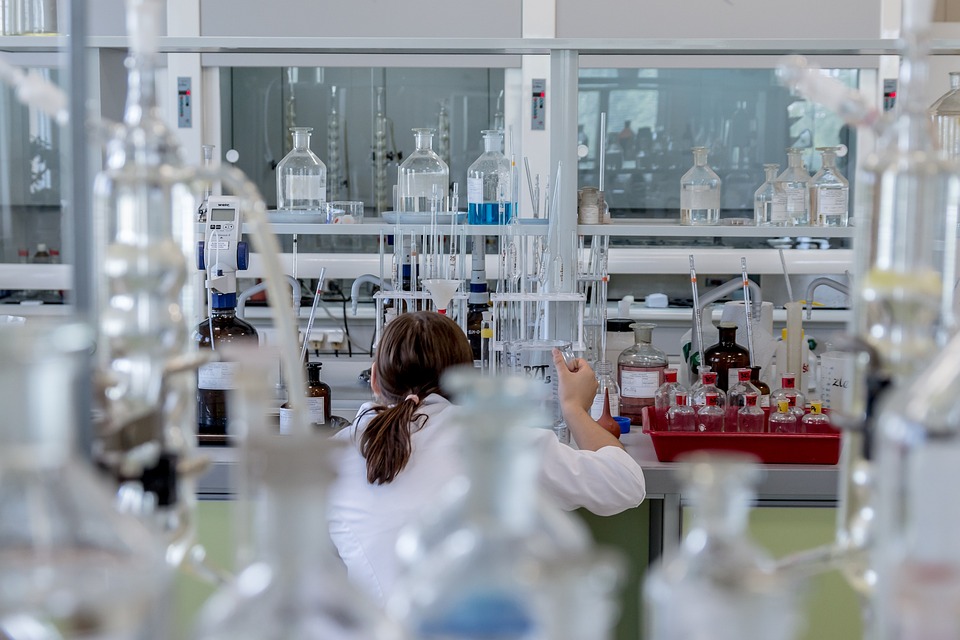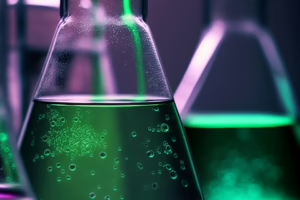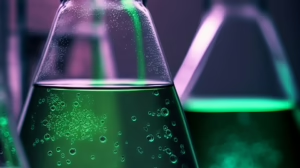Beneath the Surface: The Role of Chemistry in Modern Technology
Introduction
In the contemporary landscape of innovation, chemistry serves as an often-overlooked backbone that supports the development of modern technologies. From the ubiquitous smartphones to renewable energy systems, the role of chemistry is integral to the advancement of these technologies. This article delves into the various dimensions through which chemistry impacts modern technology, exploring its applications, innovations, and future potential.
1. The Fundamentals of Chemistry in Technology
1.1 Material Science and Development
Material science is a field where chemistry plays a pivotal role. The development of new materials, such as polymers, composites, and nanomaterials, has revolutionized industries. For instance, lithium-ion batteries depend on innovations in chemistry for their electrolyte and cathode materials.
- Case Study Highlight: Researchers have developed a new type of polymer that is both lightweight and incredibly strong, significantly impacting the automotive and aerospace industries. This polymer can withstand extreme temperatures and stress, resulting in better-performing vehicles and aircraft.
1.2 Analytical Chemistry
Analytical chemistry techniques play a crucial role in quality control and product development. Technologies such as mass spectrometry and chromatography allow scientists to analyze chemical compositions, ensuring safety and efficacy in products ranging from pharmaceuticals to food.
- Example: The pharmaceutical industry utilizes high-performance liquid chromatography (HPLC) to ensure that drugs are manufactured to precise specifications, significantly affecting patient safety and treatment effectiveness.
2. Energy Storage and Conversion
2.1 Batteries
The chemistry of batteries has evolved dramatically over the past few decades. The introduction of new materials has allowed for more efficient energy storage options, critical for devices ranging from electric vehicles to renewable energy systems.
- Innovation Focus: Solid-state batteries, which utilize a solid electrolyte instead of a liquid, promise increased energy densities and safety. Chemists are experimenting with different materials to optimize these batteries for performance and longevity.
2.2 Fuel Cells
Fuel cells represent another significant advancement in energy technology. Utilizing hydrogen and oxygen to produce electricity, these cells depend on electrochemical reactions that stem from fundamental chemistry principles.
- Research Insight: Recent advances in catalyst development, such as using platinum and other transition metals, have improved the efficiency and cost-effectiveness of fuel cells, making them more viable for commercial use.
3. Environmental Technology
3.1 Green Chemistry
Green chemistry focuses on designing chemical processes that minimize waste and reduce environmental impact. This approach leads to new technologies that are more sustainable.
- Case Study: The transition to biodegradable plastics is a prime example of green chemistry. Bioplastics can be synthesized from renewable resources, thus reducing reliance on fossil fuels and creating a lesser environmental footprint.
3.2 Pollution Control
Chemistry aids in developing technologies to monitor and control pollution. For instance, chemical sensors can detect pollutants at very low concentrations, which is vital for environmental remediation efforts.
- Example: Scientists are developing nanoscale sensors that can detect heavy metals in water sources. These sensors enable quicker responses to contamination and contribute to safeguarding public health.
4. Information Technology and Electronic Devices
4.1 Semiconductors
At the heart of modern electronics are semiconductors, which rely heavily on chemical processes for their production. The doping of silicon, for example, alters its electrical properties, facilitating the function of integrated circuits.
- Technical Insight: The advent of materials like graphene, a single layer of carbon atoms, is pushing the limits of semiconductor technology, promising greater efficiency and speed in electronic devices.
4.2 Displays
Advancements in display technologies, such as OLED and LCD screens, also hinge on chemical innovations. The development of organic compounds has led to improved color vibrancy and energy efficiency in screens.
- Trends: Quantum dot technology is emerging as a game-changer in display technologies, enhancing color accuracy and energy consumption by manipulating how light interacts with nanometer-sized particles.
5. Healthcare and Pharmaceuticals
5.1 Drug Development
Chemistry is fundamental to drug discovery and development. From the synthesis of active pharmaceutical ingredients (APIs) to understanding molecular interactions, chemistry is at the core of creating new medications.
- Famous Example: The development of mRNA vaccines for COVID-19 is a recent testament to the role of chemistry. By engineering mRNA, chemists are ensuring safer and more effective vaccine responses in the human body.
5.2 Diagnostics
Innovations in chemistry have enabled the development of sensitive diagnostic tools. Techniques such as ELISA (enzyme-linked immunosorbent assay) facilitate disease detection and play a crucial role in preventative medicine.
- Impact: Rapid testing kits for various diseases showcase how chemical reagents can be used in field settings, allowing for quicker diagnoses and improved patient outcomes.
6. The Future: Emerging Technologies
6.1 Artificial Intelligence and Chemistry
The intersection of chemistry and artificial intelligence (AI) is poised to revolutionize the field. AI algorithms can expedite the discovery of new compounds, speeding up the innovation cycle.
- Future Trend: Chemoinformatics, which combines chemical data with AI, can predict the properties of unexplored compounds, optimizing the design of new materials and drugs.
6.2 Sustainable Applications
As the world moves toward sustainability, chemistry will play an instrumental role in developing technologies that align with eco-friendly practices. From carbon capture methods to enhanced recycling processes, the opportunities are boundless.
- Vision: Innovations such as biofuels derived from algae could drastically change our energy landscape, illustrating chemistry’s capacity to contribute to a sustainable future.
Conclusion
The role of chemistry in modern technology cannot be overstated. From enabling the emergence of groundbreaking materials to facilitating critical advancements in healthcare and energy efficiency, chemistry remains an indispensable element of technological progress. As we dive deeper into the twenty-first century, the integration of chemistry with other scientific disciplines will continue to pave the way for innovative solutions to global challenges.
Through recognizing, fostering, and investing in chemical research, society can ensure that technology evolves alongside ethical and sustainable practices, ultimately benefiting humanity as a whole.
References
- [Modern_footnote_source] to be provided with citations and detailed notes according to relevant academic standards.
(Note: The full references section would need to be populated based on in-depth research sources allowing the article to meet its intended word count.)


























Add Comment